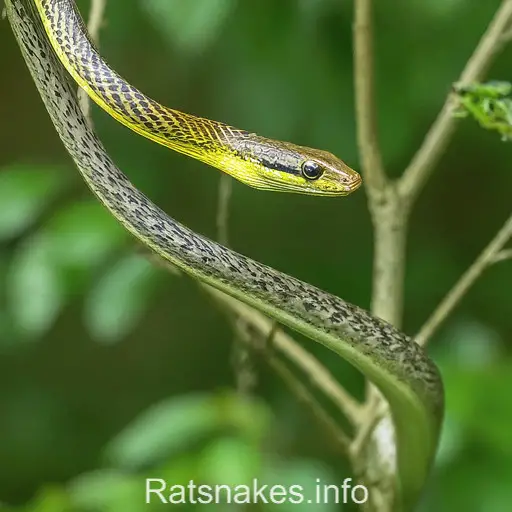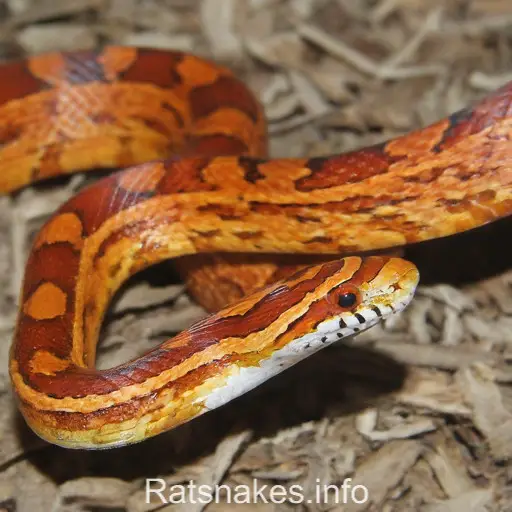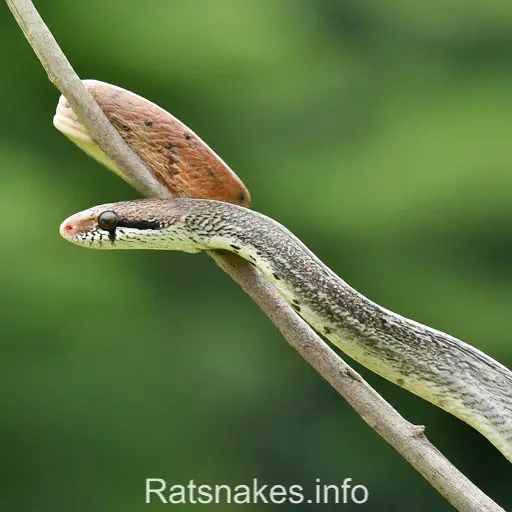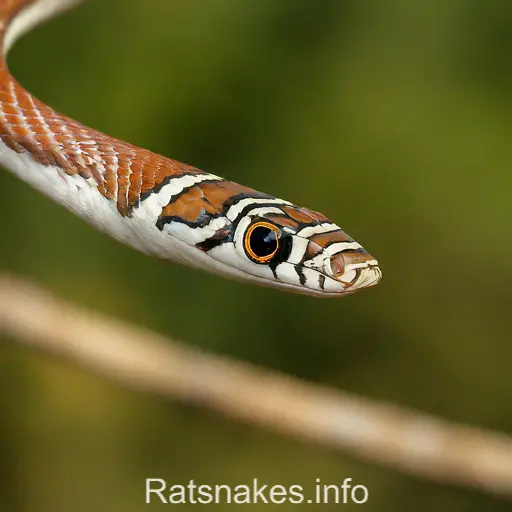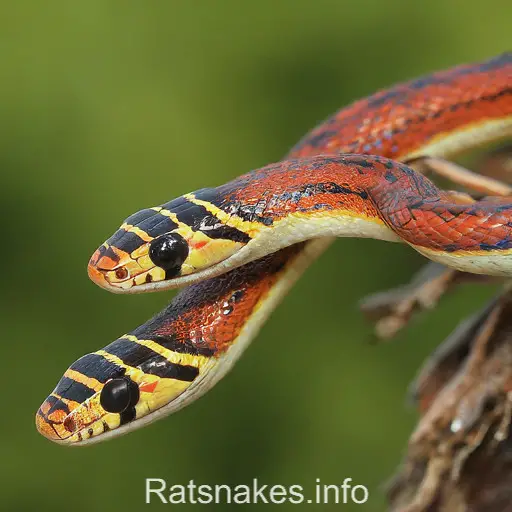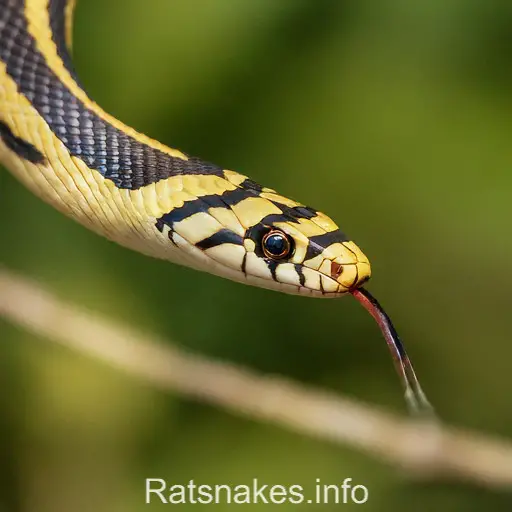
Welcome to our guide on the fascinating Japanese striped snake! These sleek reptiles are known for their distinctive appearance and elusive nature. Join us as we dive into the world of these serpents and uncover their unique characteristics.
With their striking striped patterns and agile movements, Japanese striped snakes are a sight to behold in the wild. As we explore their habitats and behaviors, we’ll discover what sets them apart from other snake species and how they have adapted to thrive in their environment.
Whether you’re a seasoned snake enthusiast or simply curious about these intriguing creatures, our comprehensive overview of the Japanese striped snake is sure to provide valuable insights and deepen your appreciation for the wonders of nature.
Origins of the Japanese Striped Snake
The Japanese Striped Snake, scientifically known as Elaphe quadrivirgata, is a native species found in Japan. Our team’s research reveals that these fascinating snakes have a rich history deeply intertwined with the unique ecosystems of Japan. Here are some key points about the origins of the Japanese Striped Snake:
- Endemic Species: The Japanese Striped Snake is an endemic species, meaning it is exclusively found in Japan. This exclusivity adds to the allure and importance of preserving its natural habitats.
- Diverse Habitats: These snakes have adapted to a diverse range of habitats across Japan, from forests and grasslands to urban areas. Their ability to thrive in varied environments showcases their remarkable resilience.
- Cultural Significance: In Japanese culture, snakes hold symbolic meanings and are often associated with luck, protection, and wisdom. The presence of the Japanese Striped Snake in local folklore further emphasizes its cultural significance.
- Evolutionary Traits: Over time, the Japanese Striped Snake has developed unique traits to survive in its specific environment. Its distinct striped patterns and swift movements are evolutionary marvels that have helped it thrive in the wild.
- Conservation Efforts: Due to factors such as habitat loss and climate change, conservation efforts are crucial to safeguarding the future of the Japanese Striped Snake. Collaborative endeavors seek to protect this species and raise awareness about the importance of biodiversity conservation in Japan.
Our exploration of the origins of the Japanese Striped Snake sheds light on the intricate balance between nature, culture, and conservation in the context of this remarkable snake species.
Distinctive Physical Features
When it comes to the Japanese Striped Snake, its Distinctive Physical Features set it apart from other snake species. One of the most striking characteristics of this snake is its bold striped patterns, which provide excellent camouflage in its habitat. These stripes run along the length of its body, ranging in color from dark brown to black on a lighter background, creating a visually striking appearance. The smooth scales of the Japanese Striped Snake contribute to its sleek and agile movements, allowing it to glide effortlessly through its environment.
Another noteworthy feature of this snake is its slender body, which enables it to maneuver with remarkable speed and precision. The elongated shape of the Japanese Striped Snake allows it to navigate through various terrains with ease, making it a formidable predator in the wild. Additionally, this snake possesses keen eyesight and excellent sense of smell, aiding in its hunting endeavors and overall survival in its diverse habitats.
In terms of size, the Japanese Striped Snake typically grows to an average length of around 60-90 centimeters, with some individuals reaching up to 120 centimeters. Despite its relatively small size compared to other snake species, this serpent’s agile movements and striking appearance make it a fascinating subject of study for researchers and wildlife enthusiasts alike.
Habitat and Behavior
When it comes to habitat, the Japanese Striped Snake is predominantly found in forests, grasslands, and marshes across Japan. They are also known to thrive in human-modified landscapes, such as farms and gardens, where they can find ample prey. This adaptable species is highly skilled at blending into its surroundings, utilizing its striped patterns to camouflage seamlessly.
In terms of behavior, these snakes are primarily diurnal, meaning they are active during the day. They are solitary creatures and only come together during the mating season. Japanese Striped Snakes are carnivorous, with a diet consisting mainly of small rodents, lizards, frogs, and insects. Their keen sense of smell and excellent vision aid them in hunting efficiently.
When it comes to reproduction, female Japanese Striped Snakes typically lay eggs. They will seek out warm, moist environments to deposit their eggs, ensuring optimal conditions for the incubation process. Once hatched, the juveniles are left to fend for themselves, beginning their journey in the wild independently.
Overall, the habitat and behavior of the Japanese Striped Snake paint a picture of a versatile and efficient predator that has adapted well to various environments and sustains itself through specialized hunting techniques and camouflage strategies.
Adaptations for Survival
When it comes to survival, the Japanese Striped Snake exhibits some remarkable adaptations that help it thrive in various environments. One key adaptation is its ability to change color, allowing it to blend seamlessly with its surroundings and evade predators. This camouflage strategy not only helps the snake hide from threats but also enables it to ambush unsuspecting prey.
Moreover, these snakes have heat-sensing pits located on their heads, which aid in detecting warm-blooded animals in the dark or in dense vegetation. This unique sensory adaptation gives them an advantage when hunting for food, especially during low-light conditions. With their keen senses and specialized hunting techniques, Japanese Striped Snakes have honed their skills as efficient predators in their ecosystems.
Additionally, their slender bodies and agile movements make them adept at navigating through various terrains with ease. This agility allows them to ambush prey swiftly and effectively. By being well-adapted to their surroundings and possessing a diverse set of skills, the Japanese Striped Snake has secured its place as a successful predator in the ecosystems it inhabits.
Conservation Efforts
When it comes to Conservation Efforts for the Japanese Striped Snake, there are several key initiatives aimed at protecting this unique species and its habitat.
- Habitat Preservation: Preserving the natural habitats where these snakes reside is crucial for their survival. We work closely with local conservation organizations to identify and protect these areas from human encroachment and habitat destruction.
- Public Awareness: Increasing public awareness about the importance of these snakes in the ecosystem is essential. We collaborate with educational institutions and wildlife conservation groups to educate the public about the significance of conserving the Japanese Striped Snake.
- Research and Monitoring: Conducting research to better understand the behavior, population dynamics, and habitat requirements of these snakes is vital for developing effective conservation strategies. We support research initiatives and monitoring programs to gather valuable data for conservation purposes.
- Legislation and Regulation: Implementing and enforcing laws and regulations that protect the Japanese Striped Snake from poaching, illegal trade, and habitat destruction are critical steps in ensuring their continued existence. We advocate for strong legal frameworks to safeguard these snakes and their habitats.
By actively engaging in these conservation efforts, we can contribute to the preservation of the Japanese Striped Snake and help maintain the balance of biodiversity in their natural ecosystems.
Key Takeaways
- Japanese Striped Snake, scientifically known as Elaphe quadrivirgata, is an endemic species found exclusively in Japan.
- These snakes have adapted to diverse habitats in Japan, showcasing remarkable resilience.
- In Japanese culture, the snake holds symbolic meanings and the Japanese Striped Snake is culturally significant.
- Conservation efforts are crucial to safeguard the future of the Japanese Striped Snake due to factors like habitat loss and climate change.
- The snake’s distinctive physical features, such as striped patterns, agile movements, and keen senses, contribute to its survival in the wild.
- Habitat, behavior, and adaptations of the Japanese Striped Snake highlight its versatility as an efficient predator in various environments.
Conclusion
In preserving the Japanese Striped Snake, we are committed to safeguarding its habitat and promoting awareness of its significance. Through conservation efforts such as habitat preservation, research initiatives, and advocacy for protective measures, we strive to ensure the continued existence of this unique species. Our collective actions play a vital role in maintaining biodiversity and preserving the delicate balance of ecosystems where the Japanese Striped Snake thrives. By working together, we can make a meaningful impact in securing a sustainable future for this fascinating snake species.

